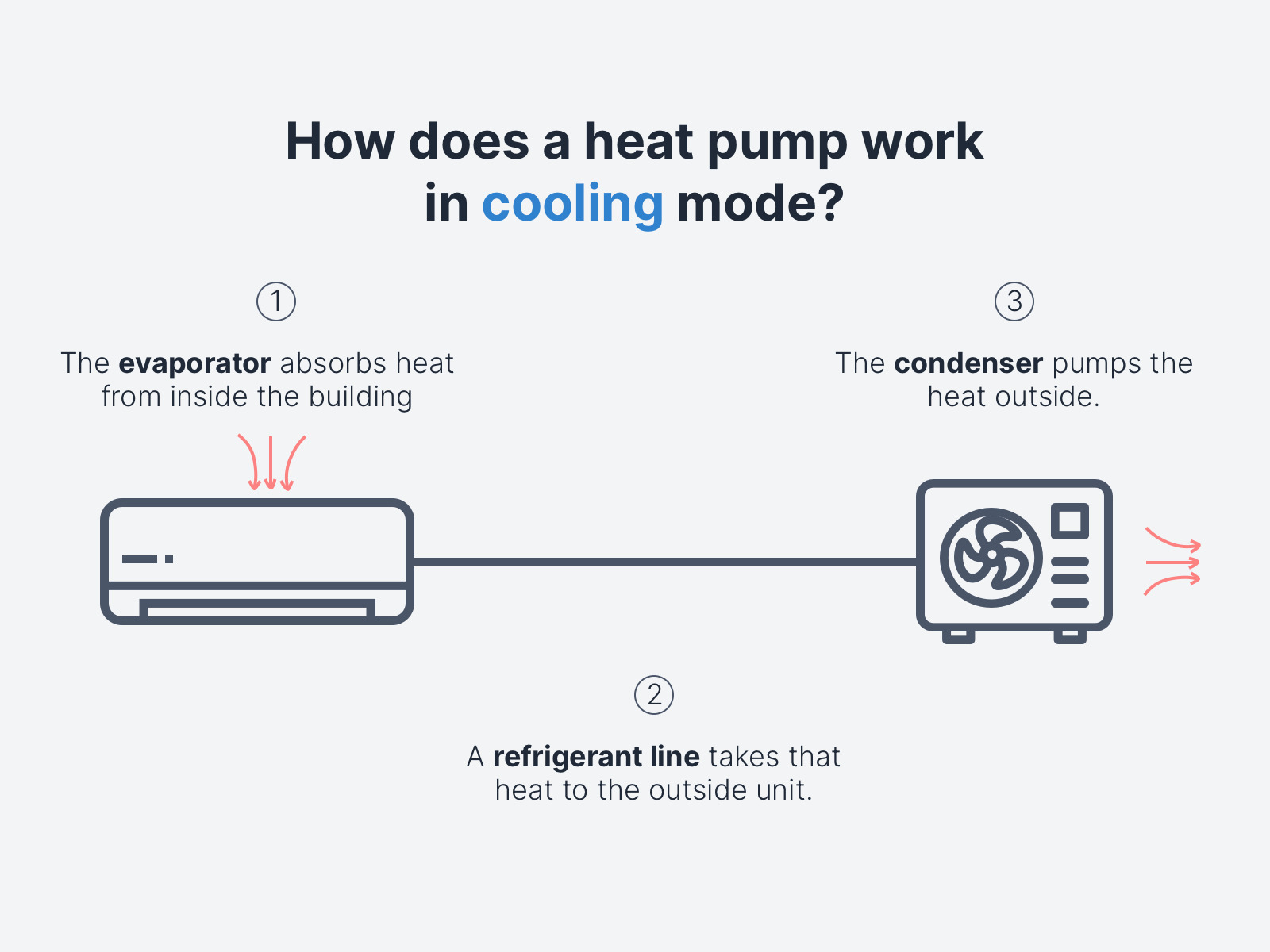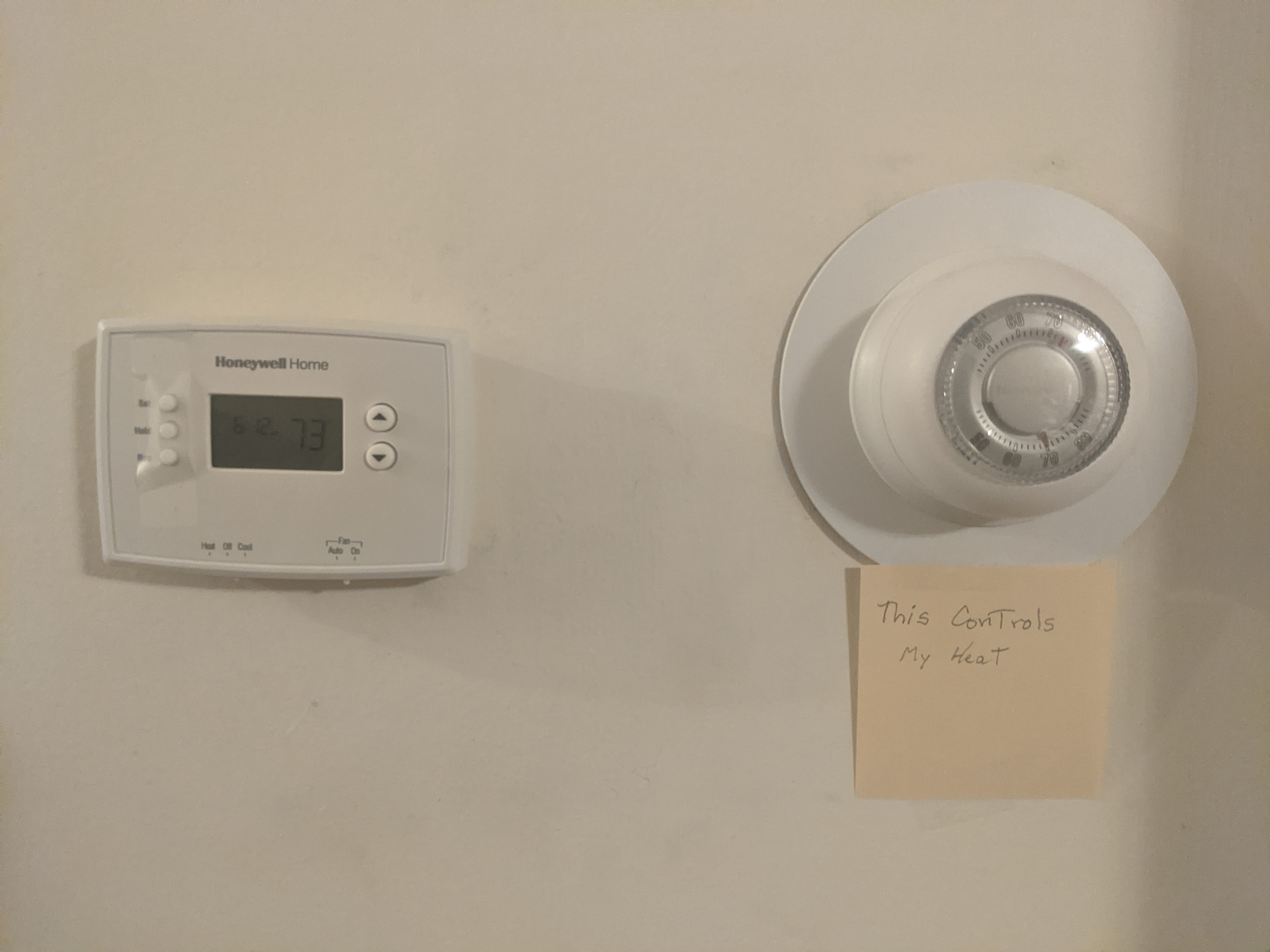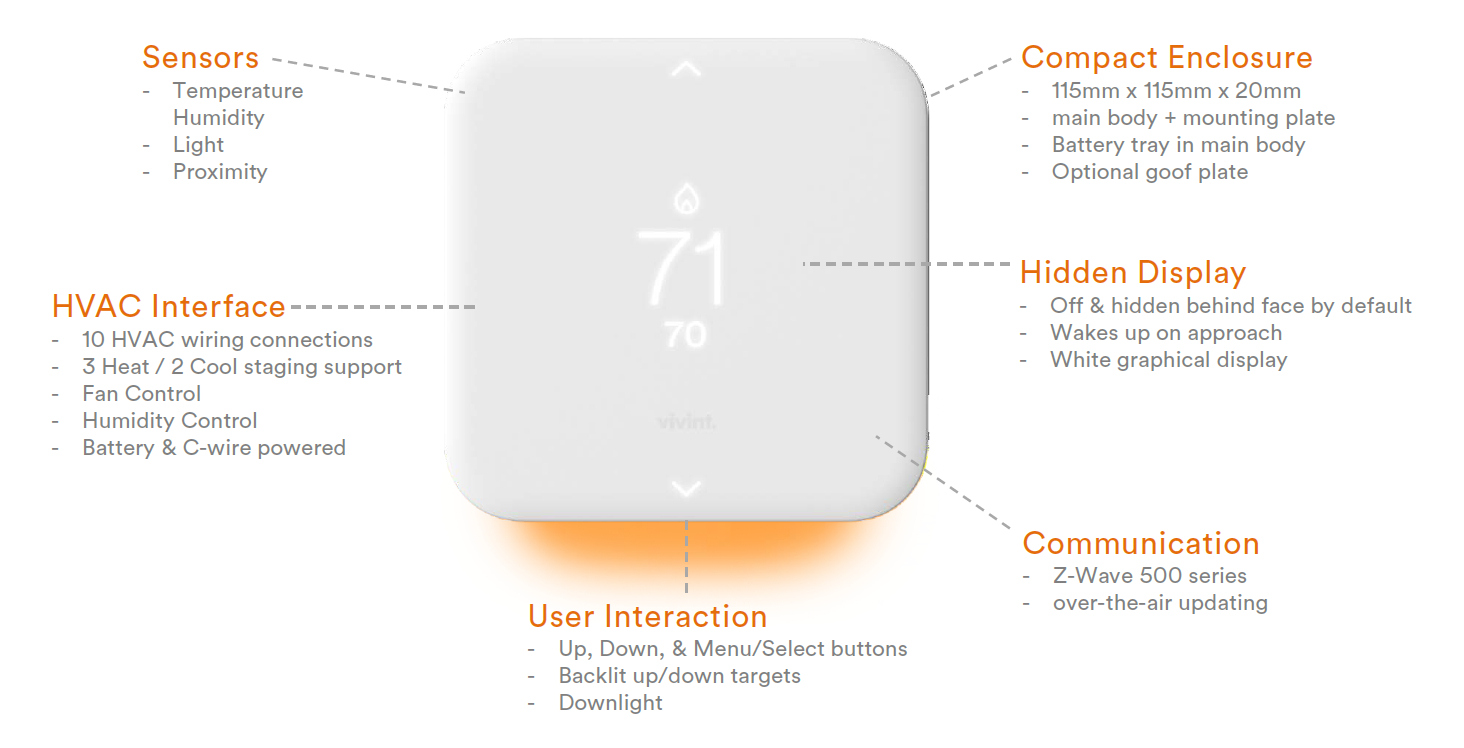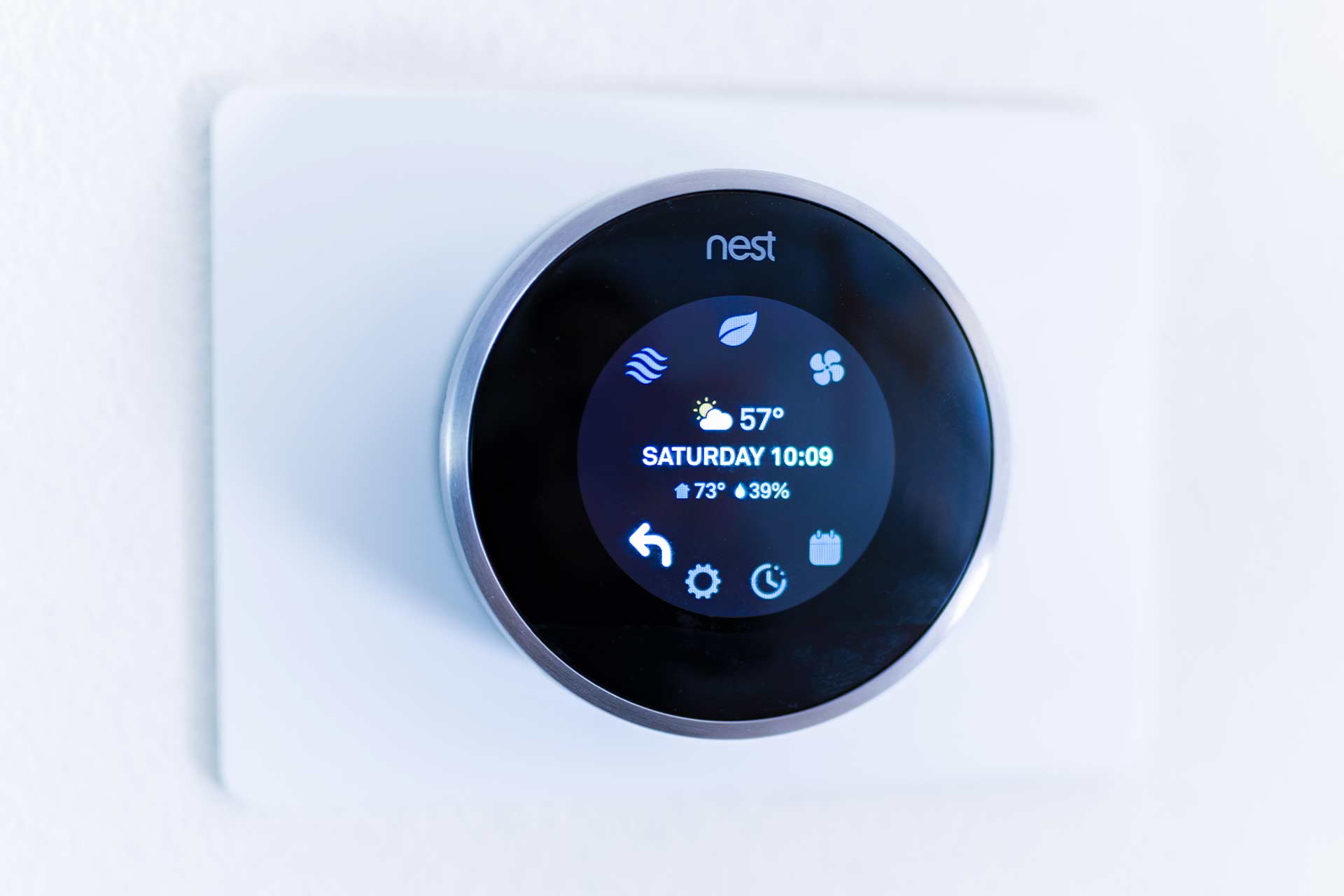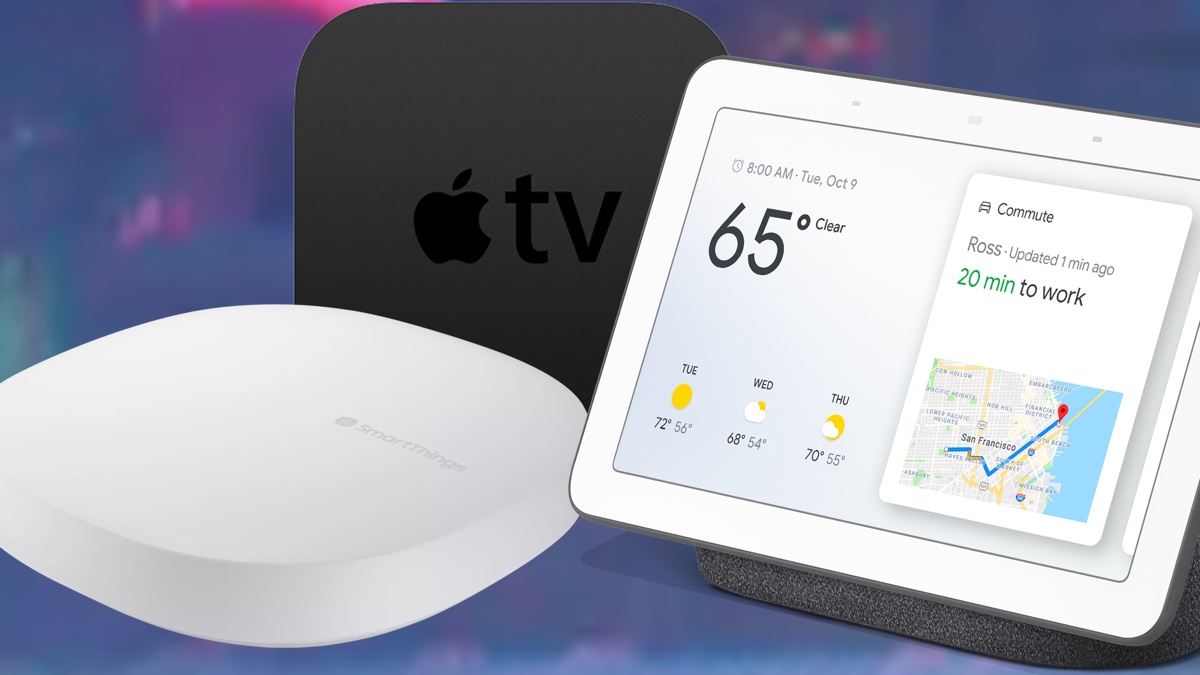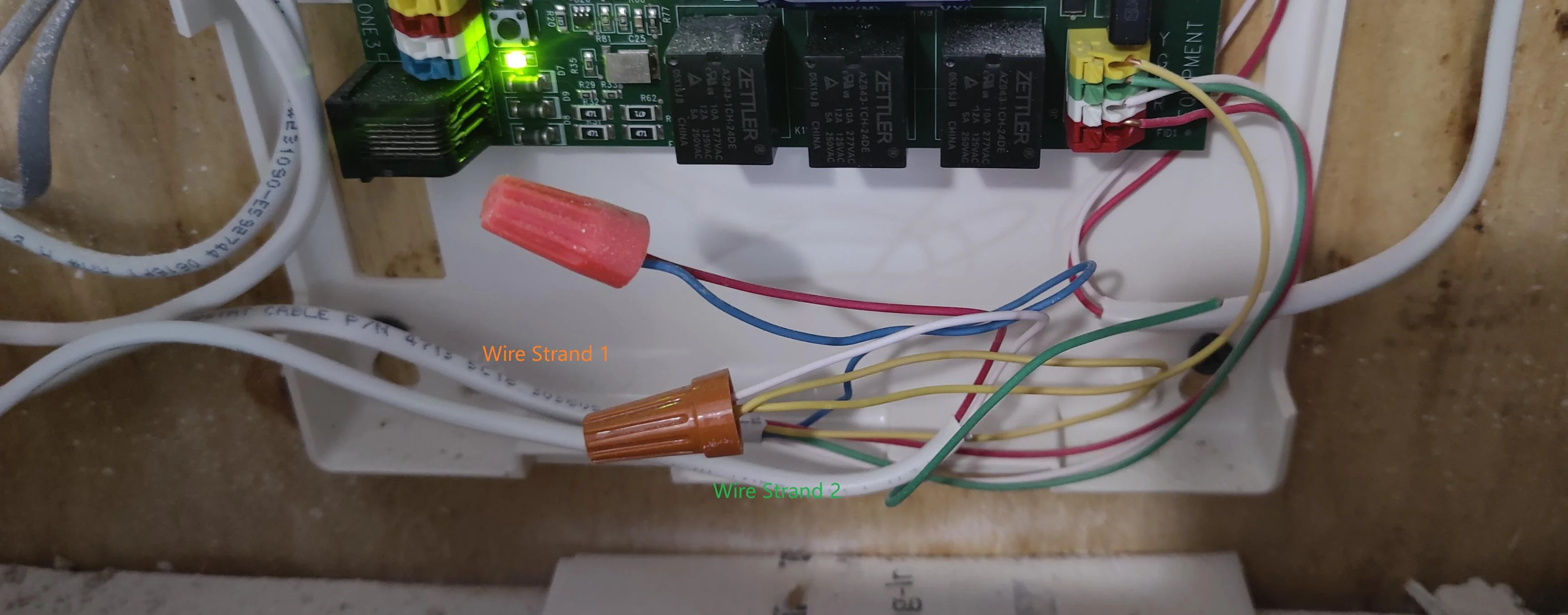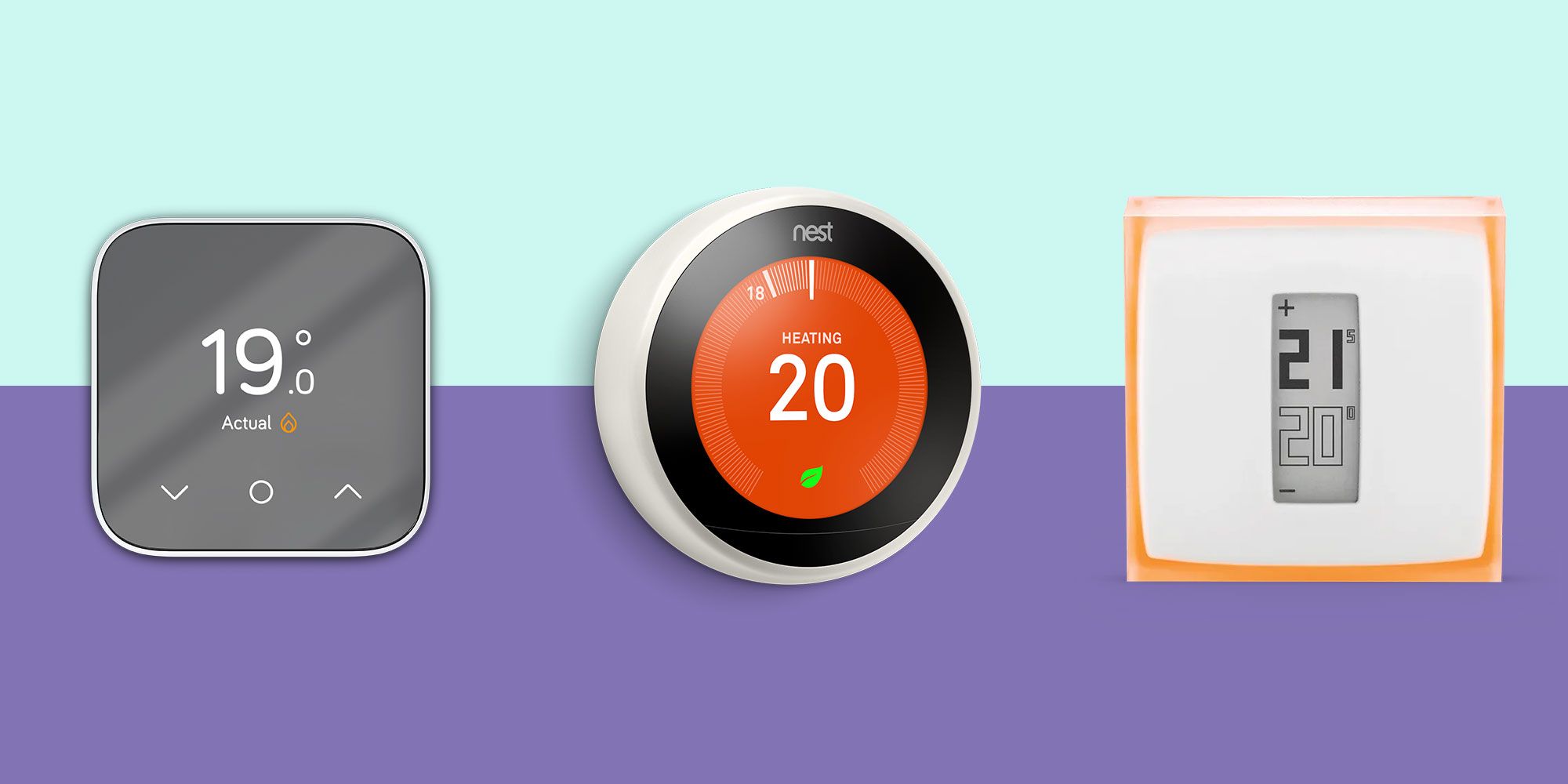Introduction
Welcome to the world of mini-split systems, where temperature control and energy efficiency go hand in hand. One notable feature of these systems is the ability to have separate thermostats in each room or zone. This offers numerous benefits that contribute to a comfortable and energy-efficient living space.
But what exactly is a mini-split system? It is a type of heating and cooling system that consists of an outdoor unit and one or more indoor units. These units are connected by refrigerant lines and require no extensive ductwork, making them a popular choice for both residential and commercial applications.
One of the key advantages of having separate thermostats in a mini-split system is the ability to control the temperature independently in different zones. This means that you can have varying temperatures in different rooms or areas of your home. Whether you prefer a cozy warm bedroom or a cool living room, the choice is yours.
Having separate thermostats also allows for better energy efficiency. Instead of heating or cooling your entire home, you can target specific areas that are being used, thereby minimizing energy wastage. By only conditioning the rooms that need it, you can significantly reduce your energy consumption and lower your utility bills.
Furthermore, zoned heating and cooling provide personalized comfort for everyone in your household. Each person can set their preferred temperature in their respective rooms, ensuring that everyone feels comfortable and satisfied. This eliminates the constant battle over the thermostat and allows for individualized comfort without compromising on energy efficiency.
Cost savings are another significant benefit of having separate thermostats in a mini-split system. By only heating or cooling the rooms that are occupied, you can save a considerable amount of money on your energy bills. Additionally, the precise temperature control offered by mini-split systems allows for more efficient use of energy, further enhancing cost savings in the long run.
Not only do separate thermostats benefit your wallet, but they also contribute to a longer lifespan of the system. By minimizing workload and providing more precise temperature control, the system can operate more efficiently and experience less wear and tear. This can result in fewer repairs and a longer overall lifespan, saving you money in the long term.
Another advantage of having separate thermostats is the ease of use. With modern mini-split systems, controlling the temperature in each zone is incredibly simple. Most units come with user-friendly remote controls or smartphone apps that allow you to adjust the temperature with just a few taps. This convenience adds to the overall comfort and satisfaction of the user.
Lastly, having separate thermostats in a mini-split system can contribute to enhanced indoor air quality. By individually heating or cooling rooms, you can prevent the spreading of allergens or pollutants throughout your home. This is particularly beneficial for individuals with respiratory conditions or allergies, as it helps maintain a healthier environment.
As you can see, thebenefits of having separate thermostats in a mini-split system are numerous. From energy efficiency and cost savings to personalized comfort and ease of use, this feature allows you to create the perfect indoor environment tailored to your preferences. So why settle for a one-size-fits-all solution when you can have a system that adapts to your needs?
Energy Efficiency
A key benefit of having separate thermostats in a mini-split system is the significant improvement in energy efficiency. Unlike traditional HVAC systems that heat or cool the entire home, mini-split systems allow you to selectively heat or cool specific zones or rooms. This targeted approach to temperature control helps to minimize energy waste and optimize energy consumption.
With separate thermostats, you have the flexibility to heat or cool occupied areas while leaving unoccupied zones untouched. For example, if you primarily use the living room during the day and the bedrooms at night, you can adjust the thermostats accordingly to provide precise heating or cooling to those specific areas. By avoiding unnecessary temperature conditioning in unoccupied spaces, you can conserve energy and reduce your utility bills.
Another energy-saving feature of mini-split systems is the absence of ductwork. Traditional central HVAC systems rely on a network of ducts to distribute heated or cooled air throughout the entire home. However, ducts suffer from energy loss due to leaks, inefficient insulation, and airflow restrictions. With mini-split systems, each indoor unit has its own small refrigerant lines that connect directly to the outdoor unit. This direct connection minimizes energy loss and ensures more efficient temperature control.
Furthermore, mini-split systems utilize inverter technology, which allows the system to adjust the compressor speed based on the current cooling or heating demands. Unlike traditional HVAC systems that constantly turn on and off, inverter-driven compressors operate at variable speeds, resulting in more precise temperature control and reduced energy consumption. This continuous adjustment ensures that the system only consumes the necessary amount of energy to maintain the desired temperature in each zone.
By combining zoned heating and cooling with the absence of ductwork and inverter technology, mini-split systems offer exceptional energy efficiency. These features allow for personalized temperature control in specific areas of your home, eliminating the need to condition rooms that are not in use. As a result, you can enjoy a comfortable living space while minimizing energy waste and reducing your carbon footprint.
It’s also worth mentioning that energy efficiency is not only beneficial for your wallet but also for the environment. By reducing your energy consumption, you are contributing to the overall conservation of natural resources and helping to mitigate climate change. So by opting for separate thermostats in a mini-split system, you are making a positive impact on both your energy bills and the planet.
Zoned Heating and Cooling
One of the key advantages of having separate thermostats in a mini-split system is the ability to implement zoned heating and cooling. Zoning refers to the practice of dividing your home into different zones or areas and controlling the temperature in each zone independently.
With separate thermostats, you have the flexibility to create personalized comfort in every room or area of your home. Each person can set their preferred temperature according to their comfort levels, without affecting other zones. This eliminates the common struggle over the thermostat and allows everyone to enjoy their ideal indoor environment.
Zoned heating and cooling is particularly beneficial for larger homes or multi-story buildings where different areas have varying heating and cooling needs. For example, you may want the bedrooms on the upper floor to be cooler during the night for better sleep, while the living areas on the ground floor require a comfortable temperature for relaxation.
Moreover, zoned heating and cooling can help you save on energy costs. Instead of heating or cooling the entire home to accommodate all areas, you can selectively condition specific zones that are currently occupied. If you spend most of your time in the kitchen and living room, you can set a comfortable temperature for those zones while keeping the bedrooms or guest rooms unconditioned. This targeted approach reduces energy consumption and optimizes efficiency by only providing heating or cooling where it’s needed.
Zoned heating and cooling also allows for better temperature control in areas with unique needs or requirements. For example, if you have a home office that tends to get warmer due to electronic equipment or a sunlit room that gets hotter during the day, you can adjust the thermostat in that specific zone to maintain a comfortable temperature.
In addition, zoned heating and cooling can help address temperature imbalances and hot or cold spots in your home. By independently controlling the temperature in each zone, you can optimize the comfort level throughout your space and eliminate drafts or uncomfortable temperature disparities. This ensures an even distribution of conditioned air, leading to a more pleasant living environment.
Overall, zoned heating and cooling provided by separate thermostats in a mini-split system offers unparalleled flexibility and personalized comfort. Whether you have different temperature preferences among family members, various usage patterns in different areas of your home, or specific temperature requirements in certain rooms, zoned heating and cooling can revolutionize your indoor climate control experience.
Personalized Comfort
Having separate thermostats in a mini-split system allows for personalized comfort, ensuring that each individual in your household can enjoy their ideal temperature settings. This level of customization is especially valuable because everyone has different comfort preferences and may require different temperatures to feel their best.
With separate thermostats, each room or zone can have its own temperature control. This means that each person can adjust the thermostat in their preferred area to achieve the desired level of comfort. For example, if one family member prefers a cooler temperature in their bedroom for better sleep, they can easily set the thermostat accordingly while allowing others to maintain a different temperature in their own rooms or areas.
Personalized comfort goes beyond temperature preferences. Mini-split systems also provide the option to set different fan speeds for each zone. Some individuals may prefer a gentle breeze while others may enjoy a higher fan speed for increased air circulation. The ability to customize these settings allows everyone to create their personalized indoor environment.
Another aspect of personalized comfort is the ability to address individual temperature needs in spaces with specific requirements. For example, an infant’s nursery may need to be kept at a constant and slightly higher temperature, while a home gym may require a cooler setting to accommodate the increased body heat during workouts. With separate thermostats, individualized temperature control can be achieved in each area, providing the perfect conditions for every activity or individual in your home.
In addition, personalized comfort extends to different times of the day. With separate thermostats, you can program temperature settings to change automatically based on your daily routine. For instance, you can program the system to warm up the living room in the morning for a cozy start to the day, and then adjust the temperature to a comfortable level for relaxation in the evening. This level of customization ensures that your home is always at the optimal temperature for the activities and times that matter most to you.
By providing personalized comfort, separate thermostats in a mini-split system can enhance your overall well-being. Tailoring the temperature and airflow to meet individual preferences can contribute to better sleep, increased productivity, and improved overall comfort. It promotes a healthier and happier living environment for everyone in your household.
Cost Savings
One of the significant advantages of having separate thermostats in a mini-split system is the potential for cost savings. This feature allows you to optimize your energy usage and reduce your utility bills, providing long-term financial benefits.
With separate thermostats, you have the ability to heat or cool only the rooms or zones that are currently in use. This targeted approach to temperature control eliminates the need to condition unused areas of your home, resulting in energy savings. By avoiding unnecessary heating or cooling, you can significantly reduce your energy consumption and lower your monthly utility bills.
Furthermore, mini-split systems are highly efficient due to their design and advanced technology. Unlike traditional HVAC systems, which rely on extensive ductwork, mini-split systems have no ducts. This eliminates the energy losses associated with duct leaks, poor insulation, and restricted airflow. By delivering conditioned air directly to each zone, mini-split systems minimize energy waste, ensuring that every bit of energy is used efficiently.
The use of inverter-driven compressors also contributes to cost savings. Inverter technology allows the system to adjust the compressor speed based on the current cooling or heating demands. Unlike conventional systems that frequently turn on and off, inverter-driven compressors operate at variable speeds, minimizing energy spikes and reducing energy consumption. This results in consistent and efficient temperature control, which helps lower your energy costs in the long run.
Moreover, the ability to individually control temperature settings in different zones allows for a more precise use of energy. Each zone can be heated or cooled to its desired temperature independently, preventing over-conditioning of unoccupied areas. By only conditioning the rooms that are currently in use, you can avoid unnecessary energy expenditure, leading to significant cost savings over time.
In addition to reduced energy costs, mini-split systems with separate thermostats also offer long-term savings in terms of system maintenance and longevity. Because you can control the temperature in each zone independently, you can prevent excessive wear and tear on the system. This can result in fewer repairs and a longer overall lifespan of the system, saving you money on maintenance and replacement costs in the future.
Overall, the cost savings associated with having separate thermostats in a mini-split system extend beyond lower energy bills. The targeted temperature control, energy efficiency, and increased system lifespan all contribute to significant financial benefits. By optimizing your energy usage and minimizing wasted energy, you can enjoy both immediate and long-term cost savings with a mini-split system.
Increased Lifespan of the System
Having separate thermostats in a mini-split system can contribute to an increased lifespan of the system itself. The ability to independently control temperature settings in different zones helps to reduce the workload on the system and minimize wear and tear, ultimately leading to a longer-lasting and more durable system.
Traditional HVAC systems typically operate based on a one-size-fits-all approach, where the entire home is conditioned to the same temperature. This constant and indiscriminate heating or cooling can put excessive strain on the system, leading to premature wear and a shorter lifespan. In contrast, mini-split systems with separate thermostats provide targeted temperature control, enabling you to condition only the rooms or zones that are currently in use. By avoiding unnecessary energy expenditure, the system’s workload is reduced, resulting in less stress on its components.
Moreover, mini-split systems eliminate the need for extensive ductwork, which can be susceptible to leaks and damage over time. Ductwork issues can significantly impact the efficiency and performance of the HVAC system. By using individual air handlers for each zone and connecting them directly to the outdoor unit, mini-split systems minimize the risk of duct-related problems, ensuring optimal airflow and reducing the likelihood of system failures.
In addition, mini-split systems often incorporate advanced features such as inverter technology. The use of inverter-driven compressors allows the system to operate at variable speeds based on the current cooling or heating demands. This eliminates the frequent on/off cycling typically observed in traditional systems, which can lead to increased wear on the compressor. The continuous and precise adjustments made by inverter-driven compressors reduce stress and extend the lifespan of the system.
Furthermore, mini-split systems generally require less maintenance compared to traditional HVAC systems. Because each zone has its own thermostat, you can easily detect and address any issues specific to that area. This helps to prevent problems from escalating and reduces the overall strain on the system. With regular maintenance and timely repairs, a mini-split system with separate thermostats can enjoy a longer lifespan, ultimately saving you money on costly repairs or system replacements.
Overall, the ability to control temperature settings in specific zones and the inclusion of advanced features like inverter technology contribute to an increased lifespan of mini-split systems with separate thermostats. By reducing the workload, decreasing the risk of duct-related problems, and implementing efficient operation, these systems can provide reliable heating and cooling for many years. Investing in a mini-split system with separate thermostats can offer peace of mind, knowing that your HVAC system is designed to last.
Ease of Use
One of the notable benefits of having separate thermostats in a mini-split system is the ease of use. Modern mini-split systems are designed with user-friendly controls and intuitive features, making temperature adjustment and system management a hassle-free experience.
Controlling the temperature in each zone is incredibly simple with mini-split systems. Most units come with user-friendly remote controls or smartphone apps that allow you to adjust the temperature with just a few taps. This convenience puts the power to control your indoor climate directly in your hands. Whether you are lounging on the couch or lying in bed, you can easily and comfortably manage the temperature settings from wherever you are.
The use of separate thermostats allows for independent temperature control in different zones, eliminating the need to interact with a centralized control panel. This means that you don’t have to navigate complicated menus or struggle to adjust the temperature for the entire home. Instead, you can focus on fine-tuning the comfort level in specific areas to suit your preferences.
In addition to temperature control, mini-split systems often offer other user-friendly features. These may include programmable timers, sleep mode settings, and even voice control compatibility. With programmable timers, you can set the system to automatically adjust the temperature based on your daily routine, ensuring optimal comfort while saving energy. Sleep mode settings allow for a gradual adjustment of temperature throughout the night for more restful sleep. And with voice control compatibility, you can use voice commands to change the temperature settings without even lifting a finger.
The simplicity and convenience of mini-split systems extend beyond the initial setup and daily use. Maintenance and troubleshooting are often made easier as well. With separate thermostats, it is easier to identify and address any potential issues in specific zones. If there is a problem with one unit, you can isolate and address it without affecting the rest of the system. This targeted approach makes maintenance more efficient, saving you time and effort.
Overall, the ease of use provided by mini-split systems with separate thermostats enhances the user experience and simplifies indoor climate control. The intuitive controls, remote access, programmable features, and minimal maintenance requirements make these systems incredibly user-friendly. With a few simple adjustments, you can enjoy personalized comfort and an optimal indoor environment without any unnecessary complications or frustrations.
Enhanced Indoor Air Quality
Having separate thermostats in a mini-split system not only provides superior temperature control but also contributes to enhanced indoor air quality. By individually heating or cooling specific zones, you can improve the air quality in each area, ensuring a healthier and more comfortable living space for you and your family.
One of the significant advantages of mini-split systems is the absence of ductwork. Traditional HVAC systems with ducts are prone to accumulating dust, dirt, and other pollutants over time. These contaminants can then circulate throughout the entire home, potentially affecting indoor air quality. In contrast, mini-split systems use individual air handlers for each zone, eliminating the need for ducts and minimizing the risk of air contamination.
With separate thermostats, you have the flexibility to set different temperature and airflow settings in each zone, allowing for customized ventilation. This ability to control airflow is particularly beneficial for spaces that require increased ventilation, such as kitchens or bathrooms, where odors and moisture may accumulate. By adjusting the airflow in these areas, you can effectively remove unpleasant odors and excess humidity, reducing the chances of mold and mildew growth.
Another advantage of mini-split systems is the availability of advanced filtration options. High-quality mini-split systems often come equipped with advanced filters that effectively capture airborne particles, allergens, and pollutants. These filters can help improve indoor air quality by trapping dust, pollen, pet dander, and other contaminants, making the air cleaner and healthier to breathe.
Furthermore, the ability to control the temperature in each zone means you can prevent the spread of allergens or pollutants throughout your home. If someone in your household has allergies or respiratory sensitivities, you can adjust the temperature in their zone to create a cleaner and more comfortable environment for them. This targeted approach to temperature control helps minimize exposure to allergens and maintain a healthier indoor environment.
In addition, mini-split systems are known for their quiet operation. The indoor units are designed to operate at low noise levels, ensuring a peaceful and comfortable living environment. This is particularly important for individuals who are sensitive to noise or who require a quiet space for work or relaxation.
Overall, mini-split systems with separate thermostats offer improved indoor air quality through the absence of ducts, customized ventilation options, advanced filtration, and reduced noise levels. By controlling temperature and airflow in each zone, you can create a cleaner, healthier, and more comfortable living environment for you and your loved ones.
Conclusion
The benefits of having separate thermostats in a mini-split system are considerable, making it an excellent choice for achieving optimal comfort, energy efficiency, and improved indoor air quality. The ability to independently control temperature settings in different zones allows for personalized comfort, ensuring that each individual can enjoy their preferred temperature.
Energy efficiency is a significant advantage of mini-split systems with separate thermostats. By selectively heating or cooling only the rooms or zones that are in use, you can minimize energy waste and reduce utility bills. The absence of ductwork in mini-split systems also eliminates energy losses associated with leaks and restricted airflow, further enhancing energy efficiency.
Zoned heating and cooling provided by separate thermostats offers several advantages. It allows for better temperature control in various areas of your home, addressing individual preferences and specific needs. This targeted approach also helps to reduce energy consumption and eliminate hot or cold spots, creating a more balanced and comfortable indoor environment.
Cost savings are another significant benefit of having separate thermostats in a mini-split system. By optimizing energy usage, you can lower your utility bills and save money in the long run. Additionally, the increased lifespan of the system due to reduced workload and targeted temperature control leads to fewer repairs and replacements, further enhancing cost savings.
The ease of use provided by mini-split systems with separate thermostats enhances the overall user experience. With user-friendly controls, remote access, and programmable features, adjusting temperature settings and managing the system becomes a simple and convenient task.
Finally, mini-split systems with separate thermostats promote enhanced indoor air quality. The absence of ductwork reduces the risk of air contamination, while advanced filtration options help to capture airborne particles and allergens. Customized ventilation and targeted temperature control also contribute to a healthier living environment.
In conclusion, having separate thermostats in a mini-split system offers a range of benefits, including personalized comfort, energy efficiency, cost savings, ease of use, and enhanced indoor air quality. When considering a heating and cooling system for your home, mini-split systems with separate thermostats provide an excellent solution for achieving optimal comfort while maximizing efficiency and cost-effectiveness.







